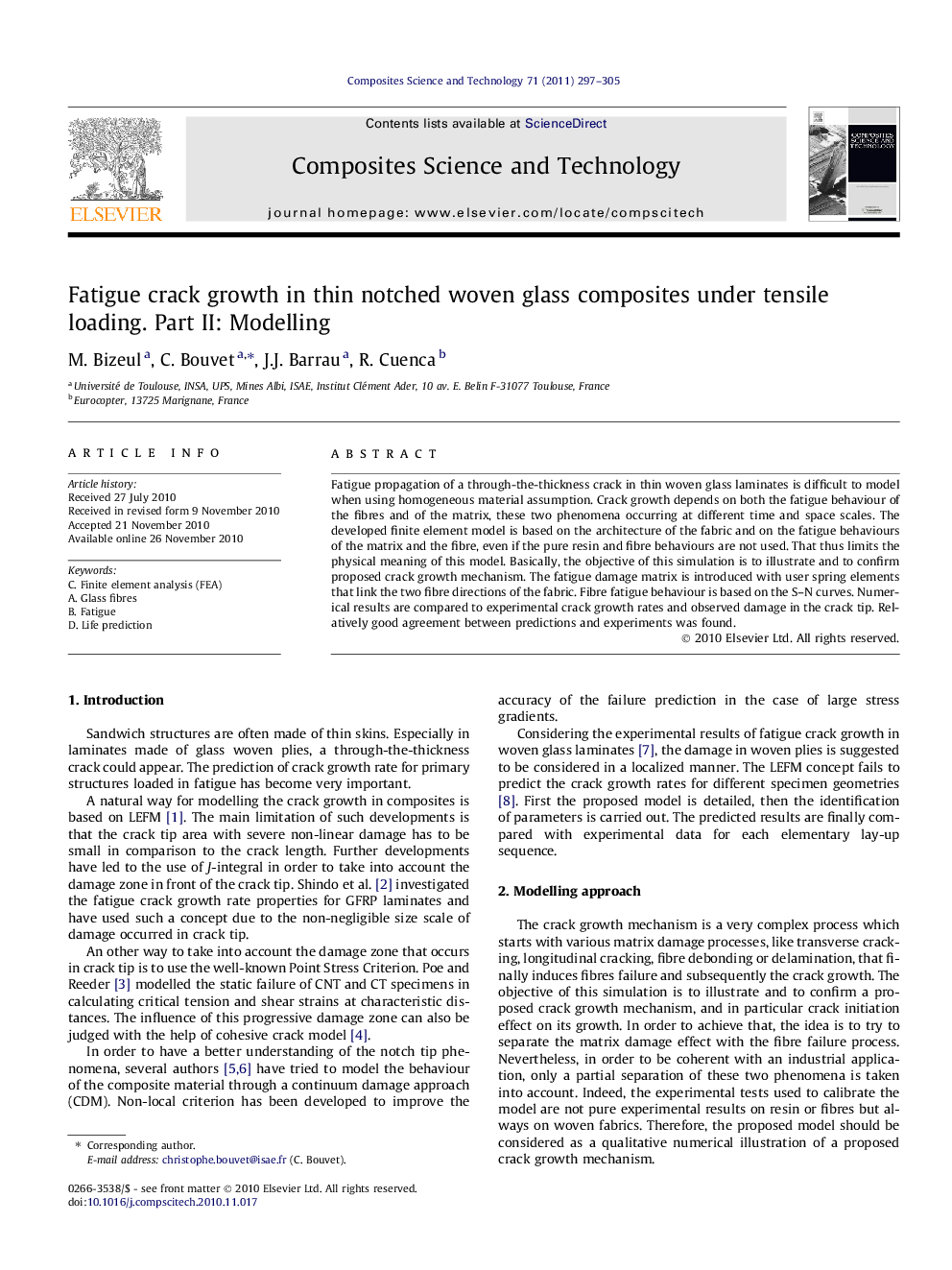| Article ID | Journal | Published Year | Pages | File Type |
|---|---|---|---|---|
| 821149 | Composites Science and Technology | 2011 | 9 Pages |
Fatigue propagation of a through-the-thickness crack in thin woven glass laminates is difficult to model when using homogeneous material assumption. Crack growth depends on both the fatigue behaviour of the fibres and of the matrix, these two phenomena occurring at different time and space scales. The developed finite element model is based on the architecture of the fabric and on the fatigue behaviours of the matrix and the fibre, even if the pure resin and fibre behaviours are not used. That thus limits the physical meaning of this model. Basically, the objective of this simulation is to illustrate and to confirm proposed crack growth mechanism. The fatigue damage matrix is introduced with user spring elements that link the two fibre directions of the fabric. Fibre fatigue behaviour is based on the S–N curves. Numerical results are compared to experimental crack growth rates and observed damage in the crack tip. Relatively good agreement between predictions and experiments was found.
